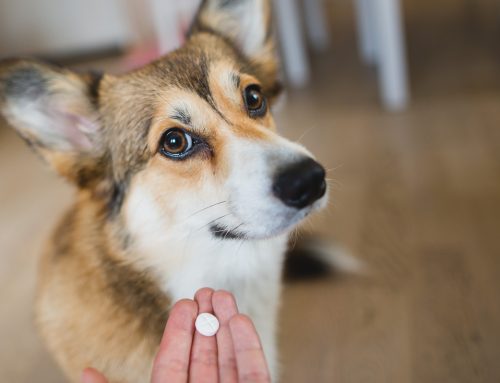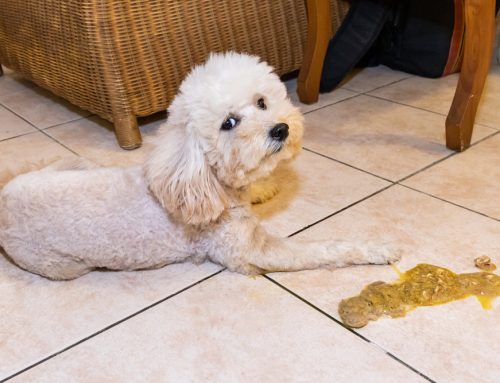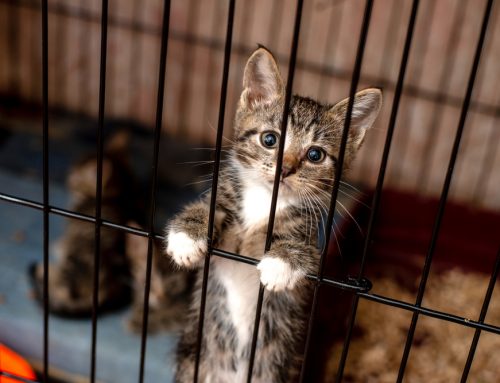If your pet displays disruptive or destructive behavior when left alone, they may be affected by separation anxiety. Pets who are extremely attached to their owner can panic when left alone, causing high stress levels that result in unwanted conduct. Our team at Country Valley Veterinary Clinic wants to answer some frequently asked questions regarding separation anxiety in pets so, if your pet is affected, we can help alleviate their stress.
Question: What causes separation anxiety in pets?
Answer: In many cases, the reason a pet develops separation anxiety is unclear, but more adopted shelter pets are affected by this problem than those who have been family pets since they were young. This indicates that a pet who loses an important person in their life is more likely to develop separation anxiety. Situations that have been associated with separation anxiety in pets include:
- Change in owner — When a pet is abandoned, surrendered to a shelter, or given to a new guardian or family, they are more likely to develop separation anxiety.
- Change in schedule — An abrupt change in schedule that suddenly leaves the pet at home alone for longer than usual time periods can trigger separation anxiety. This is especially relevant as people return to their offices after working at home during the pandemic.
- Change in residence — Moving to a new home can trigger a pet to develop separation anxiety.
- Change in family presence — A family member’s sudden absence, either caused by death or a move, can lead to separation anxiety.
Q: What are common separation anxiety signs in pets?
A: Pets suffering from separation anxiety exhibit extreme stress from the time they are left alone until their owner returns. Specific signs include:
- Clinginess — Pets may become extremely clingy as their owner is preparing to leave. They pick up on their owner’s departure cues and become anxious that they will be left alone soon.
- Urinating and defecating — When left alone, pets suffering from separation anxiety may inappropriately eliminate in the house.
- Vocalizing — These pets may persistently vocalize when left alone.
- Destructive behavior — These pets often chew on inappropriate objects, dig at doorways, and destroy their owner’s belongings when separated from their guardian. This violent behavior can result in injury.
- Escaping — Pets may try to escape from their confined area, trying to reunite with their owner.
- Pacing — Pets may navigate a fixed pattern when separated from their owner.
Q: Can cats develop separation anxiety?
A: While cats are reputedly indifferent to their human family members, studies have shown that cats form a similar attachment to their owners as dogs. In addition, 64 percent of cats evaluated exhibited less stress when they were near their owners. Separation signs in cats include:
- Hyper-attachment — Affected cats may seek constant contact with their owner when they are together.
- Inappropriate elimination — These cats may urinate or defecate outside their litter box, frequently choosing spots such as their owner’s bed or shoes.
- Vocalizing — Some cats may loudly yowl while their owner is absent.
- Destructive behavior — Affected cats, especially male cats, may scratch or shred their owner’s belongings.
- Excessive grooming — These cats, especially female cats, may excessively groom, potentially injuring themselves.
Q: How can I manage my pet’s separation anxiety?
A: If your pet is exhibiting separation anxiety signs, you should have them evaluated by a veterinary professional to ensure they aren’t affected by a medical issue, such as a kidney infection or cognitive dysfunction syndrome. Once they are deemed healthy, address their separation anxiety with the following steps:

- Desensitization and counterconditioning — Start by performing your pre-departure cues, but not leaving the house. Do this several times a day until your pet no longer becomes anxious when you are preparing to leave your home. You can then go outside for short time periods, leaving a food-puzzle toy to occupy your pet while you are gone. Gradually increase the time you are gone.
- Exercise — Ensure you provide your pet with sufficient exercise. All pets need physical and mental exercise to lead a fulfilled life, and exercising them before you leave for the day will ensure they are ready for a nap rather than being upset that you are leaving.
- Environmental enrichment — Provide a space where your pet can look out the window and be entertained by passersby and wildlife. Leaving music or the television playing is another good way to provide stimulation for your pet while you are absent.
- Greeting — When you return home, don’t be overly dramatic when greeting your pet. They interpret large emotional displays as a major event, causing them stress and worry.
- Medications and supplements — Some pets may need anti-anxiety medications or supplements to help them cope with their separation anxiety.
The stress caused by separation anxiety can severely negatively affect your pet’s quality of life. If you are concerned your pet is suffering from separation anxiety, contact our American Animal Hospital Association (AAHA)-accredited team at Country Valley Veterinary Clinic, so we can help mitigate their stress.







Leave A Comment